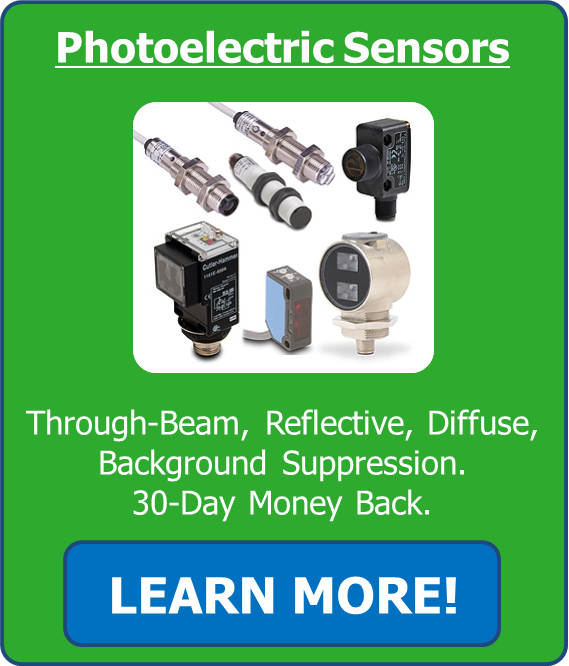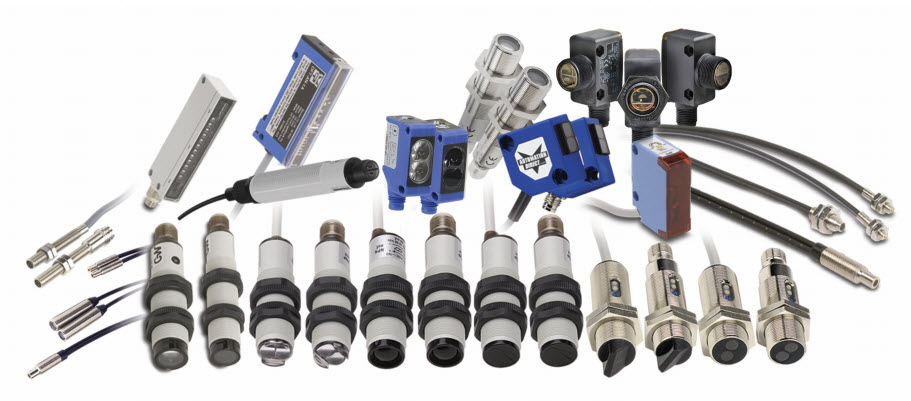There are many different styles of photoelectric sensors, but really only four basic technologies: through-beam, reflective, diffuse, and background suppression. The chart describes some advantages and disadvantages of each technology. To learn more about AutomationDirect’s photoelectric sensors visits www.AutomationDirect.com/photoelectric.
Through-beam
Advantages:
- Most accurate
- Longest sensing range
- Very reliable
Disadvantages:
- Must install at two points on system: emitter and receiver
- Costly – must purchase both emitter and receiver
Reflective
Advantages:
- Cost less than through-beam
- Only slightly less accurate than through-beam
- Sensing range better than diffuse
- Very reliable
Disadvantages:
- Must install at two points on system: sensor and reflector
- Slightly more costly than diffuse
- Sensing range less than through-beam
Diffuse
Advantages:
- Only install at one point
- Cost less than through-beam or reflective
Disadvantages:
- Less accurate than through-beam or reflective
- More setup time involved
Background Suppression
Advantages:
- Effective with reflective
backgrounds
Disadvantages:
- Cost more than diffuse, reflective or through-beam
- Most setup time required


To read more articles about discrete sensing, click here.


